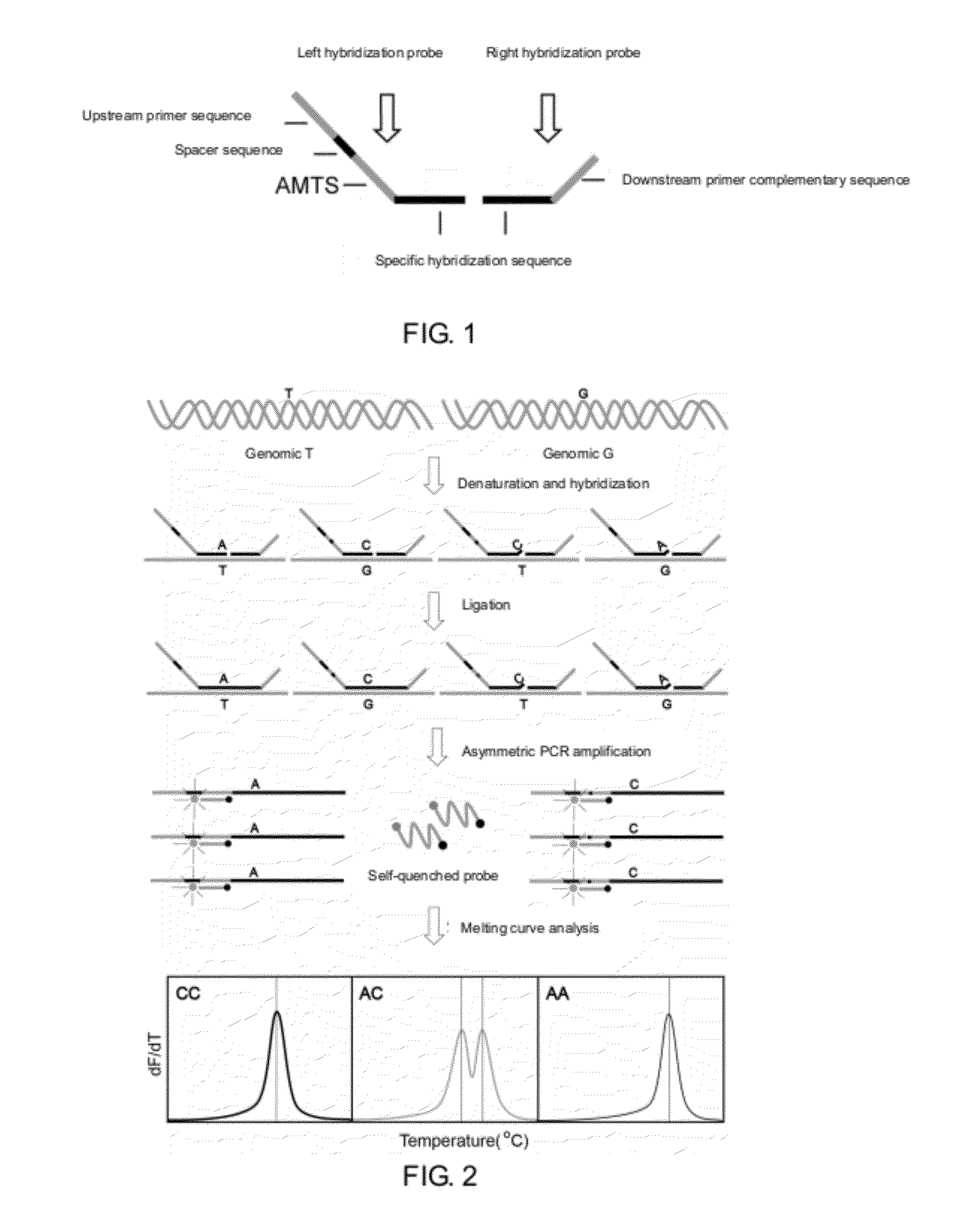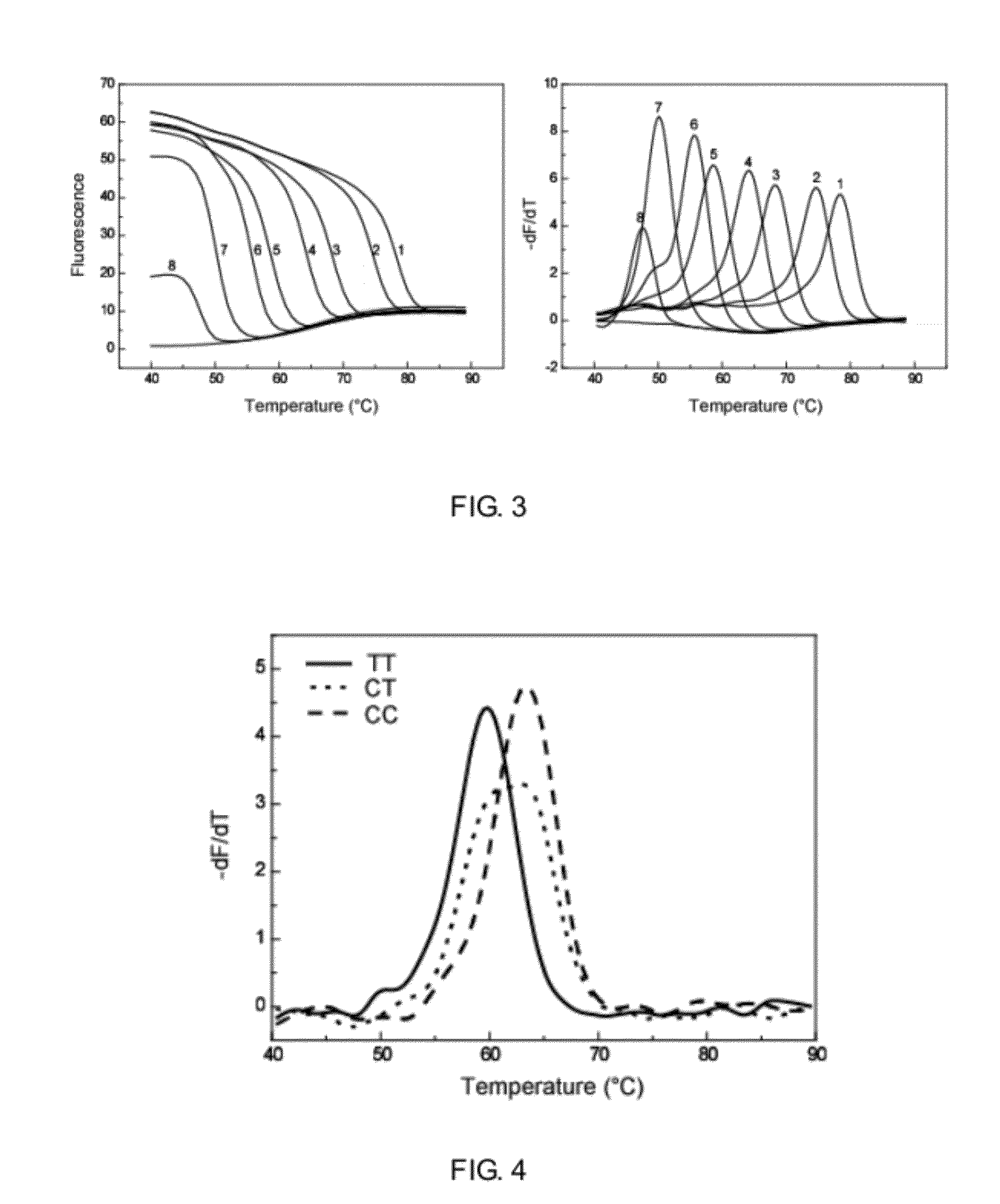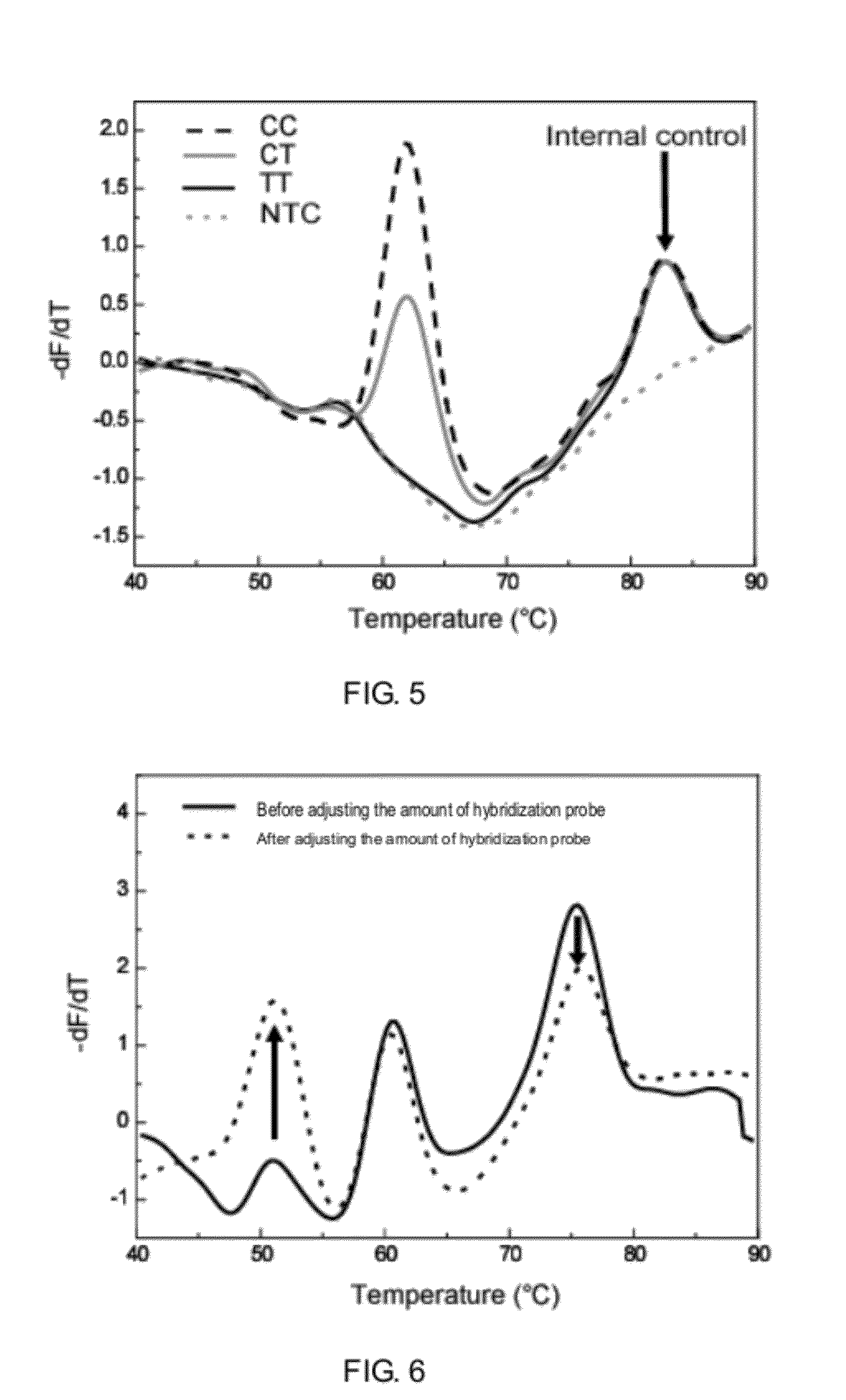Method for the Detection of Multiple Single Nucleotide Variations or Single Nucleotide Polymorphisms in a Single Tube
- Summary
- Abstract
- Description
- Claims
- Application Information
AI Technical Summary
Benefits of technology
Problems solved by technology
Method used
Image
Examples
example 1
The Design of an Artificial Melting Temperature Tag Sequence (AMTS)
[0077]A fluorescent probe may hybridize with multiple different oligonucleotide sequences, but when hybridizing with different oligonucleotide sequences, different melting curve peaks will form, having different melting temperatures. The designed probes and target sequences are: Probe 1, Target 1, Target 2, Target 3, Target 4, Target 5, Target 6, Target 7, Target 8.
[0078]The reaction system of melting curve is: in 25 μL reaction solution, there were 2.5 μL 10×PCR buffer, 1.5 mM MgCl2, 5 μmol probe 1, without a target sequence or with 10 μmol of one of the target sequences mentioned above. Carrying out melting curve analysis for the above mixture, the program of the reaction was: 95° C. denaturation for 1 min; maintaining at 35° C. for 2 min, then increasing the temperature from 40° C. to 90° C. with a rate of 1° C. / step to perform the melting curve analysis, and collecting the fluorescence signal from the FAM channel...
example 2
Detecting the Genotype of Single Nucleotide Variation Sites Through Two Different Melting Curve Peaks
[0081]Taking the single nucleotide polymorphism site (SNP rs321198) as an example, designing two allele-specific left hybridization probes (SNPrs321198-1C and SNPrs321198-1T) and one general right hybridization probe (SNPrs321198-R) directing to the two homozygous genotypes C and T at this site, respectively, each allele-specific hybridization probe comprises a unique AMTS, the two AMTS can hybridize with a fluorescent probe (Probe 2), but the melting temperatures are different.
[0082]Based on this, genotypes can be determined according to the melting temperatures. The first base in the 5′ end of the detection probe is modified with phosphorothioation, the bases in bold are replaced with a corresponding LNA.
[0083]The detection process comprises hybridization and ligation, PCR amplification and melting curve analysis, as specifically described below:[0084]1) hybridization and ligation ...
example 3
Detecting the Genotypes of a SNP Site from the Height of Melting Curve Peaks
[0087]Taking SNP (rs321198) as an example, for the two homozygous genotypes C and T of this SNP, only a left probe SNPrs321198-2C directing to the C type was designed, this probe comprised a unique AMTS, which hybridized with the fluorescent probe, probe 1. In addition, a competitive left probe SNPrs321198-3T was also designed for the T type, this probe was used in ligation and could amplify, but said probe does not comprise an AMTS, thus, the result of the melting curve analysis should be that the C type shows one melting curve peak, the heterozygous C and T show a low melting curve peak value at the same position, and the T type does not show any peak, the two probes share the same left probe SNPrs321198-R. Another site referred to as internal reference is used as a control for such changes of peak values, said internal reference site is a homozygous peak.
[0088]The hybridization and ligation reaction syste...
PUM
| Property | Measurement | Unit |
|---|---|---|
| Melting point | aaaaa | aaaaa |
| Fluorescence | aaaaa | aaaaa |
Abstract
Description
Claims
Application Information
 Login to View More
Login to View More - R&D
- Intellectual Property
- Life Sciences
- Materials
- Tech Scout
- Unparalleled Data Quality
- Higher Quality Content
- 60% Fewer Hallucinations
Browse by: Latest US Patents, China's latest patents, Technical Efficacy Thesaurus, Application Domain, Technology Topic, Popular Technical Reports.
© 2025 PatSnap. All rights reserved.Legal|Privacy policy|Modern Slavery Act Transparency Statement|Sitemap|About US| Contact US: help@patsnap.com



